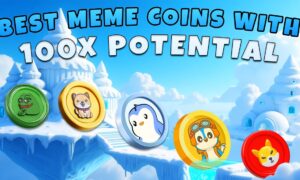When CryptoKitties made the headlines back in 2017 and 2018, few people could anticipate that it was not only a temporary phenomenon but the start of a huge trend capable of transforming the way we see art and interact with artists. In retrospect, it seems that the major success of non-fungible tokens (NFTs) was inevitable, given that they have a bunch of unique features that help them solve many problems and bring a lot of new opportunities.
Today, crypto art has become a thing on its own, as more and more digital artists learn about the possibilities of NFTs, while investors and collectors are looking to get exposure to digital assets of great value.
Hungry Hamster is one of the latest examples of NFT collections and ecosystems aimed at art lovers and toy collectors. It is only starting its journey, which means early investors can leverage this opportunity and win in the long term.
Cute Hungry Hamsters Can Already Be Yours
Hungry Hamster (HH) is a collection of 10,000 NFTs representing digital cards showing hamsters in different postures. Each hamster is a one-of-a-kind visual narrative. The tokens are hosted on Solana, one of the fastest-growing blockchains.
The hamsters combine 200 unique elements related to 7 attributes, including the headgear, eyes, mouth, clothes, munchies, skin, and background. Some of these combinations are scarcer, with rare hamsters naturally being way more expensive. Specifically, 140 elements or layers are common among the NFT items, while 60 of them are rarer.
Hungry Hamster operates as a club as well, giving token holders access to unique experiences, such as:
- Exclusive toys will be given four times per year;
- Member-only NFT sales;
- Hungry Hamster mini-sculpture giveaways;
- Physical and online art events;
- Early access to “The Greed Pool” artists NFT startup fund and incubator.
Thus, the Hungry Hamster collection is the beginning and a gateway to an entire ecosystem that will revolve around digital art, toys, and other collectibles. The end goal of the founding team, which includes alumni of Sotheby’s Institute of Art, is to create a venue for NFT artists to showcase their work with a physical presence in lesser developed markets.
The tokenized experiences with Hungry Hamster go beyond digital collectibles to include producing and displaying toys, framed artworks, and sculptures, among others.
Following the collection of digital hamsters that are currently minted, the project will evolve by launching 3D hamsters and sculptures, which will be created by 3D artists. There will be a lot of physical toys as well.
Eventually, the Hungry Hamster will have the so-called “Greed Pool,” which will act as a funding and incubator platform for artists and creators.
Why Solana?
When the project started at the end of 2021, the NFTs represented ERC-721 tokens, but the hamsters have recently migrated to Solana, and there were very good reasons to support this move. To begin with, NFT collectors and artists were not happy about the high gas fees on Ethereum. On Solana, minting NFTs can cost you from a few cents to $1, which can go unnoticed compared to Ethereum’s gas fees that are usually in the dozens of USD and even go above $100 per NFT.
Solana is a high-performing blockchain built around scalability and security. It provides the same features as Ethereum, such as smart contracts and decentralized applications (dapps), but it’s much faster. For example, minting NFTs on Solana can take only a couple of seconds, and you cannot fail. Elsewhere, Ethereum is well known for its congestion problems. It is possible that your minting process can take up to several minutes, and what’s even rose, you may fail but still pay the high gas fees.
Solana is the right choice for Hungry Hamster as it has a large collection of 10,000 NFTs and plans to create a channel to attract digital artists and NFT enthusiasts.































